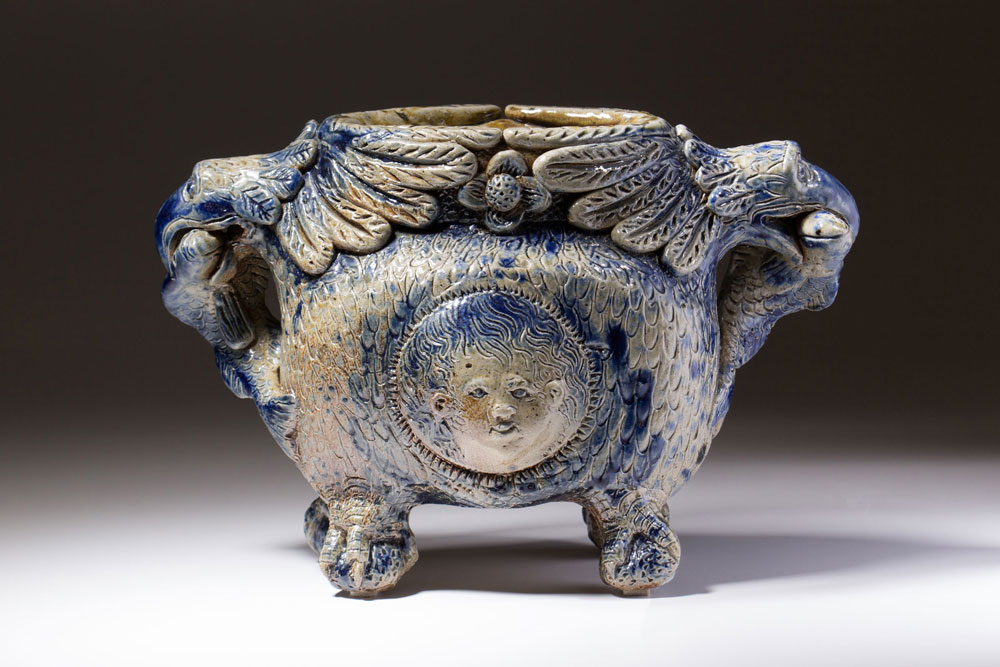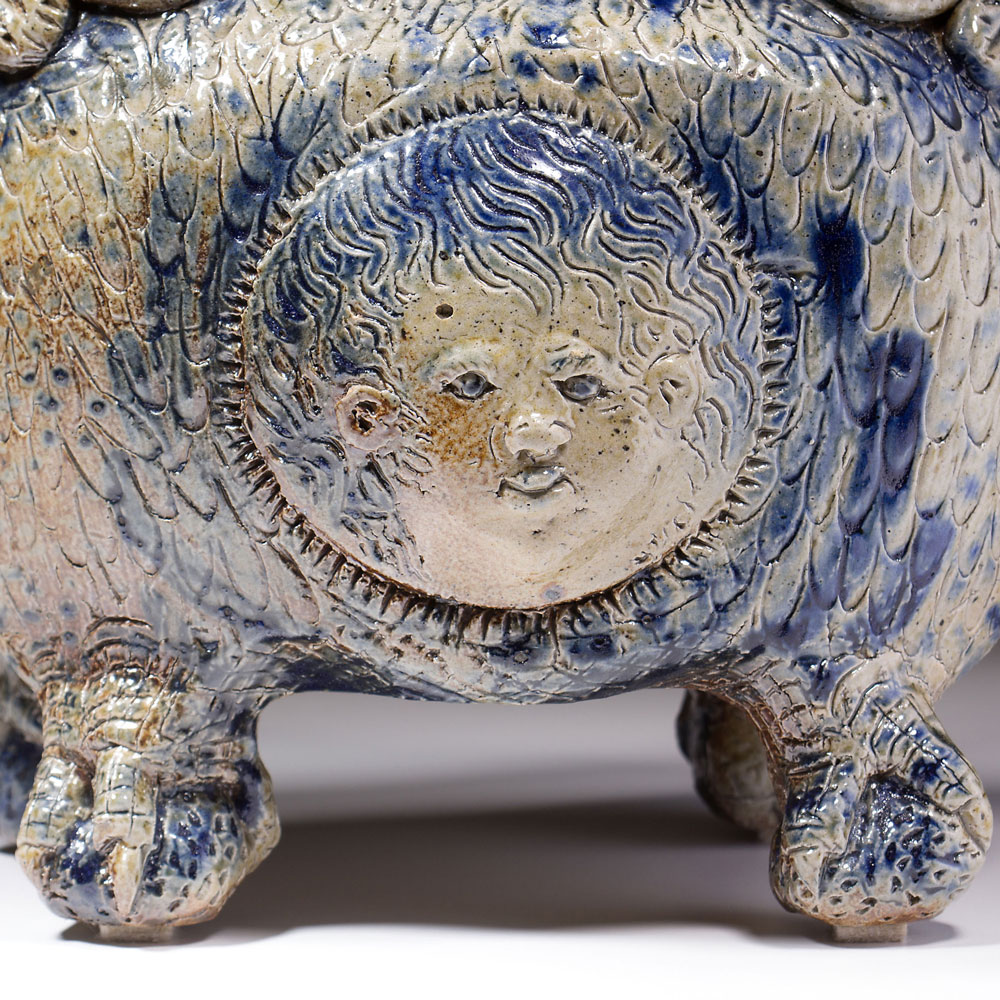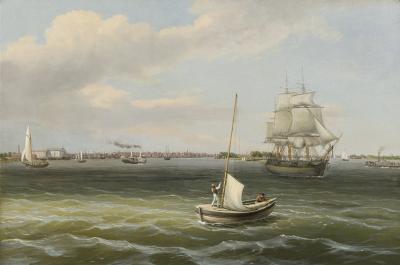Discovery from the Field: Important Anna Pottery Presentation Vase
The brothers Wallace and Cornwall Kirkpatrick, proprietors of the Anna Pottery in Anna, Illinois, were responsible for the most important, boldly imaginative folk pottery produced in the United States during the second half of the nineteenth century. They are most famous for their elaborate snake-infested jugs and creative pig-form flasks, which typically carry incised Temperance-Movement-inspired inscriptions meant to elucidate the evils of drinking alcohol. Examples of Anna Pottery are represented in many major private and institutional folk art collections across the United States, including Colonial Williamsburg and Winterthur Museum.
In addition to being innovative potters, the Kirkpatrick brothers always remained community minded, fulfilling, over the course of their respective lives, important roles in Masonic and Odd Fellow organizations, the Anna city government, and other civic entities. This close involvement with their neighbors and families led to the production of many presentation pieces and commemorative objects in honor of special events or individuals.

- Presentation vase, made by Cornwall Elihu Kirkpatrick (1814–1890) for his daughter Amy R. Kirkpatrick (1862–1935), Anna Pottery, Anna, Illinois. Salt-glazed stoneware with brushed cobalt-oxide highlights. H. 8-1/2, W. 12-3/4, D. 6 in. Courtesy of Jeffrey S. Evans & Associate Auctions. Photography by William H. McGuffin. To be offered in the Jeffrey S. Evans & Associates June 17, 2017 Americana Auction.
The recent surfacing of this presentation vase, published here for the first time, represents one of the most important discoveries of Anna Pottery to date and illustrates the Kirkpatricks’ strong sense of family and place. The vase was made by master potter Cornwall Elihu Kirkpatrick (1814–1890) for his daughter Amy R. Kirkpatrick (1862–1935). Its mate, made for Cornwall’s other daughter, Anna (1853–1932), is illustrated on pages 296 and 297 of The Family, Kilns, & Stoneware of Kirkpatrick, by Greg Mathis (2014), and is currently in a private collection.
Both vases are made of salt-glazed stoneware with brushed cobalt-oxide highlights and bear an incised “January 1, 1886” date. Their pillow-like forms are nearly identical, each exhibiting a flattened, ovoid body covered with incised feathers surrounding a convex, circular reserve on each side; the neck covered with applied, individually delineated large feathers surmounted with two boldly molded eagle heads protruding symmetrically from the ends, each eagle’s mouth grasping a struggling fish detailed with scales and fins; the whole raised on four claw-and-ball feet terminating in individual talons. This vase is unique from its mate in the treatment of the reserves and the placement of a four-petal floral rosette on each side below the rim. One reserve on this example features a cherub-like portrait of a young girl, presumably Cornwall Kirkpatrick’s daughter Amy, with finely molded facial features and incised flowing hair. The other reserve contains the presentation inscription “Amy R. Kirkpatrick / Architect and Builder / here off (sic) / Anna, Ill, Janr 1st 1886.”
Amy R. Kirkpatrick was the fifth child of her father’s second marriage in 1849 to Amy Vance Kirkpatrick (1823–1903), sister of his first wife who died in 1848. Never married and often referred to as “Miss Birdie,” the younger Amy was an accomplished artist who worked in oils and watercolors in an impressionistic style, having studied at the Chicago Academy of Fine Arts from 1882–1883. She exhibited at the Vincennes Gallery in Chicago and at the 1885 New Orleans World’s Exposition, where she won an Honorable Mention award. Her paintings include two circa-1902 depictions of the Anna Pottery buildings and several portraits of family members. She is represented in the Illinois Women Artists Project at Bradley University.
This example of Anna pottery was acquired directly from the Kirkpatrick family and provides a significant bridge between American utilitarian stoneware of the earlier nineteenth century and the more avant-garde American art pottery movement of the later nineteenth century. A major work with a personal connection to one of the country’s most important potting dynasties, this current discovery exudes a national sense of pride and accomplishment, and presents a story intrinsic to the true spirit of Americana and folk art.
-----
Jeffrey S. Evans is president of Jeffrey S. Evans & Associates Auctions, Mt. Crawford, VA.
This article was originally published in the 17th Anniversary (January-April) of Antiques & Fine Art magazine, a fully digitized version of which is available at afamag.com. AFA is affiliated with Incollect.com.


































